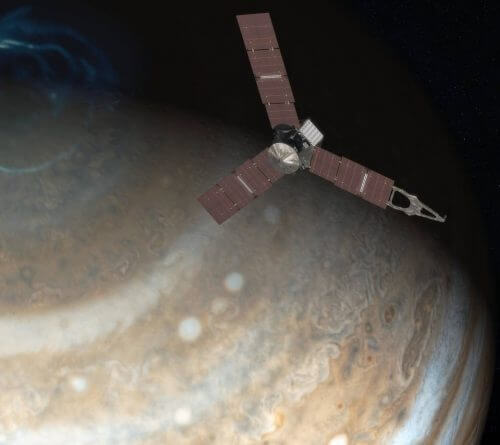July 4, the Independence Day of the USA is a date around which they always try to coordinate space missions. This time they return to justice after 15 years

The spacecraft "Juno", launched by the American space agency, NASA, will arrive on July 4,000th at the planet Jupiter, the largest planet in our solar system, which is made entirely of gas, and will enter orbit around it. On its way there, the spacecraft traveled more than two billion kilometers in a journey that lasted almost five years. The journey will indeed end, but the spaceship's mission will only begin. After performing some complex maneuvers, the spacecraft will enter a unique orbit that will allow it to approach up to about XNUMX kilometers above the cloud tops of the planet, closer than any other spacecraft that has previously reached Jupiter.
"When Juno enters orbit," says Dr. Yohai Caspi from the Weizmann Institute of Science, "we will be able to examine for the first time the flow beneath the thick clouds that cover Jupiter." Dr. Caspi is one of the scientists in the team leading the Juno scientific mission. Dr. Caspi, and his partner, staff scientist Dr. Eli Galanti, will be in the spacecraft's command and control room in Pasadena, California, along with other scientists and engineers from the mission team who will follow the spacecraft as it performs the maneuvers, enters the planned orbit - and begins sending data.
Dr. Caspi, Dr. Galanti and their friends hope that "Juno" will allow them to answer the question, how deep are the strong jet streams that characterize Jupiter's cloud layer. These are streams of gas that look like neat streaks on the outer surface of Jupiter, and since Jupiter has no solid ground, they may exist to a very great depth. The scientists hope to find out how these patterns form: whether the outer layers rotate in coordination with the inner layers, how deep the famous Great Red Spot is, and whether the planet has a solid inner core. An answer to this last question may contribute to understanding how planets are formed, and Dr. Caspi and the members of the research group he heads will use the data from the gravity measurements that "Juno" will perform to "calculate backwards" the wind patterns that created them.
Dr. Caspi previously used these tools to calculate the depth of weather patterns on Jupiter and other planets, but the gravity data from the "Juno" spacecraft will be much more accurate, and will open a first-of-its-kind window for scientists, through which they can observe what is happening beneath the clouds that Cover the giant planet Jupiter, and understand what is really going on there.

One response
What's the matter with the black flag on the side of the site, it's been like this for several months, and there are no further details.